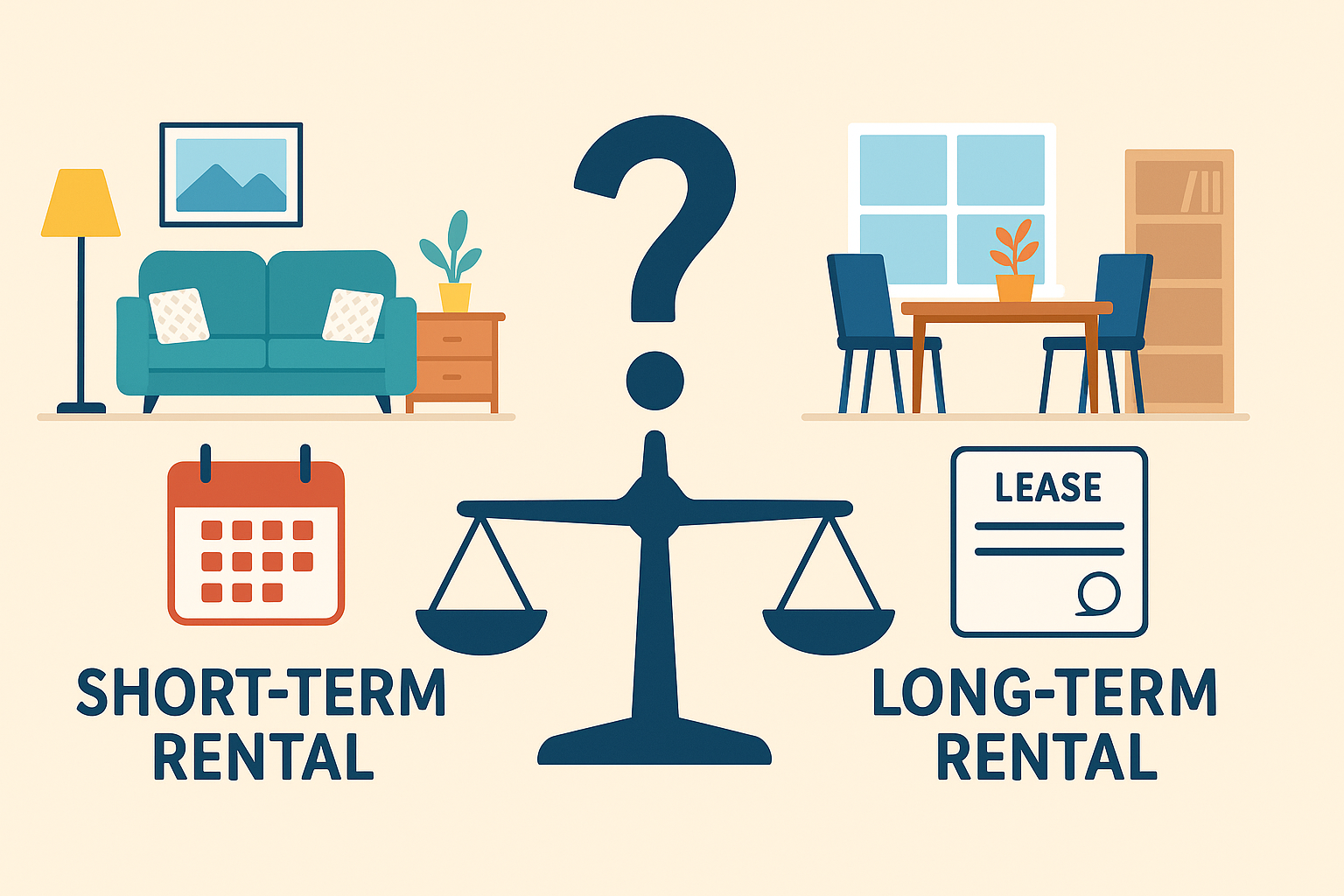October 1, 2025
Stricter regulations and rising operational costs in 2025 are reshaping Canada’s short-term rental market. Compare the pros, cons, and risks of short- vs. long-term rentals for your investment property.

Rental property owners across Canada are evaluating whether to operate their units as short-term or long-term rentals. With shifting regulations, evolving tenant expectations, and tighter enforcement in cities like Toronto, Vancouver, and Calgary, the differences between these two strategies are more important than ever.
In 2025, both rental models offer benefits—but they also come with very different risks, costs, and compliance obligations. Understanding these trade-offs is key to choosing the right path for your property and long-term investment goals.
Short-term rentals (STRs)—typically defined as stays under 30 days—are facing stricter regulations in many provinces. Toronto’s bylaws, for example, require that STRs be a host’s principal residence, and limit the number of nights per year. Vancouver, Calgary, and other cities have implemented or expanded licensing programs, requiring operators to register, pay fees, and comply with safety inspections.
In 2024, British Columbia introduced province-wide short-term rental legislation, mandating registration and data sharing with municipalities. These rules are now in full effect in 2025, and enforcement has increased significantly, including fines and deplatforming on sites like Airbnb and VRBO.
Long-term rentals, by contrast, remain governed by provincial tenancy laws (such as BC’s Residential Tenancy Act or Ontario’s Residential Tenancies Act), which provide clearer protections and fewer permitting requirements.
Short-term rentals can generate more income per night, especially in high-demand tourist areas. However, they also come with higher operational costs like cleaning, turnover, furnishing, and constant guest communication. Vacancy risk is higher and revenue can be seasonal, particularly in resort or university towns. It is arguably a lot more involved on a day-to-day basis in comparison to long-term rentals.
Long-term rentals typically provide more predictable, stable income with lower management effort. Once a quality tenant is placed, the property may go months or years with minimal turnover. Maintenance and cleaning costs are lower, and utilities are usually tenant-paid.
In today’s inflationary environment, consistency and reduced workload are a growing priority for many owners, especially for those with full-time jobs or out-of-province investments.
Many Canadian insurance providers now classify short-term rentals as commercial use. This can lead to higher premiums or voided policies if not disclosed properly. In contrast, long-term rentals typically qualify for standard landlord insurance with optional add-ons for loss of rent or legal protection.
Taxation is also different. STR income is often considered business income and may require GST/HST remittance if over the $30,000 threshold. They are also more likely to trigger capital cost allowance restrictions or be scrutinized under CRA audits. Long-term rental income is typically treated as passive income and does not require sales tax registration.
Whether you’re evaluating a furnished condo downtown or a seasonal cottage, the short-term vs. long-term decision in 2025 comes down to regulation, effort, and risk tolerance. Many owners who entered the short-term market for flexibility are now shifting back to long-term leases for simplicity and compliance.
Before committing to either model, evaluate your local bylaws, insurance coverage, financial goals, and available time. What worked five years ago may no longer be viable today.

604-216-7368